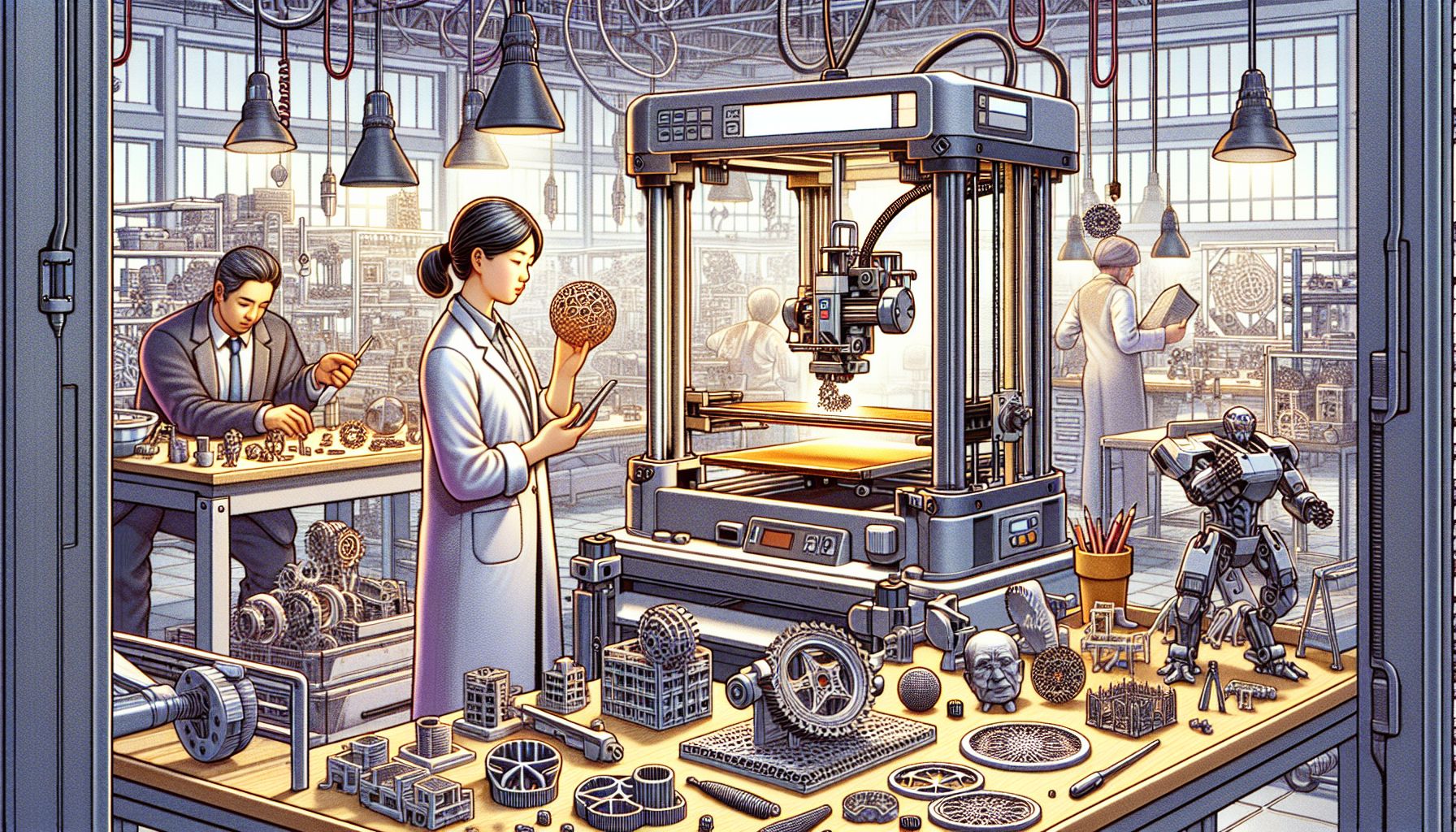📌 Let’s explore the topic in depth and see what insights we can uncover.
⚡ “Say goodbye to the lengthy traditional manufacturing processes; 3D printing is shaking things up, propelling us straight into the future. Strap in, as we unravel the staggering transformation of production as we know it!”
Welcome to the future of manufacturing! A world where creating products is as simple as pressing ‘print’. This isn’t a sci-fi movie or a futuristic fantasy — the technology that’s making this possible is already here, and it’s called 3D printing. An innovation that’s transforming the way we design, create, and distribute products. This blog post will take a deep dive into the world of 3D printing, explaining how it’s revolutionizing manufacturing processes 🚀. 3D printing, also known as additive manufacturing, is a process of creating three-dimensional solid objects from a digital file. The creation is achieved using additive processes, where an object is created by laying down successive layers of material until the object is formed. This technology is not only changing the way we manufacture, but it’s also transforming industries, creating new opportunities, and setting the pace for a more sustainable future.
🎯 The Magic of 3D Printing

"Revolutionizing Production: The Dawn of 3D Printing"
3D printing is arguably one of the most exciting technological advancements of our time. It’s changing the way we think about making things. The technology allows for highly customized production, reducing waste, saving time, and cutting costs. Imagine being able to print a spare part for your car 🚗, a toy for your kid 👦, or even a house 🏠! The possibilities are endless.
Let’s take a closer look at some of the ways 3D printing is revolutionizing manufacturing:
Customization
Traditional manufacturing processes often involve creating a mold or a die, which can be expensive and time-consuming. With 3D printing, customization is a breeze. Whether it’s a unique jewelry piece 💍, a personalized prosthetic limb 👣, or a tailored aerospace component 🚀, 3D printing allows for customization at no extra cost.
Efficiency
3D printing can significantly reduce the time it takes to go from design to product. It allows for rapid prototyping, where designers can print a prototype within hours, make adjustments, and reprint as needed. This speed and flexibility are simply unheard of in traditional manufacturing.
Sustainability
By using additive processes, 3D printing reduces waste significantly compared to traditional subtractive manufacturing methods. Additionally, it can utilize a wide range of materials, including biodegradable plastics and recycled materials, contributing to a more sustainable manufacturing future.
🚀 3D Printing in Action: Industry Transformations
From healthcare to construction, 3D printing is making its mark across various industries. Let’s delve into a few examples:
Healthcare 🩺
In the medical field, 3D printing is used to create personalized prosthetics, dental implants, and even human tissue and organs for transplantation. This level of personalization improves patient outcomes and reduces healthcare costs.
Automotive 🚗
Car manufacturers are using 3D printing to create lighter and more efficient vehicle parts. They’re also leveraging the technology to print spare parts on demand, reducing the need for large inventories.
Construction 🏗️
🧩 As for Companies, they’re experimenting with 3D printing houses and other structures. This method could revolutionize the construction industry by reducing labor costs, construction time, and environmental impact.
Food 🍔
Believe it or not, 3D printing is making its way into the kitchen too. 3D food printers can create edible objects with complex designs, and even tailor nutritional content to individual dietary needs.
💡 The Future of 3D Printing: Opportunities and Challenges
The future of 3D printing looks promising, with endless opportunities for innovation and improvement. As the technology matures, we can expect to see more widespread adoption and even more applications. However, like any innovation, 3D printing also comes with its challenges. Intellectual property rights, quality control, and technological limitations are among the issues that need to be addressed as 3D printing continues to evolve. Additionally, while 3D printing can reduce physical waste, it can increase digital waste, as each printed object requires a digital file. Despite these challenges, the benefits of 3D printing far outweigh the drawbacks. The technology offers a path towards more efficient, sustainable, and personalized manufacturing. As we continue to innovate and overcome these obstacles, the 3D printing revolution will undoubtedly continue to reshape our world.
🧭 Conclusion
The 3D printing era is upon us, transforming manufacturing processes and revolutionizing industries. This groundbreaking technology is proving to be a game-changer, offering unprecedented levels of customization, efficiency, and sustainability. From printing prosthetics that change lives to constructing buildings that challenge architectural norms, 3D printing is only just beginning to show its true potential. As we look to the future, we can expect to see this technology become increasingly integral to our lives, both in ways we can anticipate and in ways we can’t even imagine yet.
So, are you ready to press ‘print’ and join the 3D printing revolution? 🖨️🚀✨.
🌐 Thanks for reading — more tech trends coming soon!
